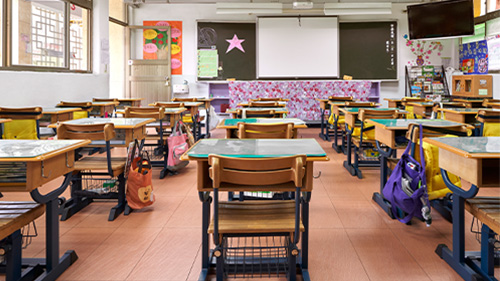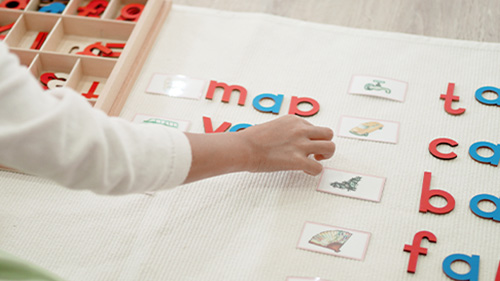Secondary ELA Grading Hacks
As secondary English teachers, we know how important it is for our students to learn to write well. We also know that oftentimes means we have over a...
AP & Honors Mathematics
Explore Wiley titles to support both AP and Honors mathematics instruction.
Literacy Skills & Intensive Reading
Connections: Reading – Grades 6–12
Empower student success with a proven intensive reading program that develops strong reading skills in striving readers.
Drama, Speech & Debate
Basic Drama Projects 10th Edition
Build students’ confidence and competence with comprehensive, project-based theatre instruction.
Literature
Connections: Literature
Support learners as they study dynamic, relevant texts and bring the richness of diverse voices to students through literature.
Literature & Thought
Develop critical thinking, reading, and writing across literacy themes, genres, historical eras, and current events.
Language Arts
Vocabu-Lit® – Grades 6–12
Help students build word power using high-quality contemporary and classic literature, nonfiction, essays, and more.
Connections: Writing & Language
Help students develop grammar, usage, mechanics, vocabulary, spelling, and writing and editing skills.
Reading/English Language Arts
Measuring Up to the English Language Arts Standards
Incorporate standards-driven teaching strategies to complement your ELA curriculum.
English Language Learners
Measuring Up for English Language Learners
Incorporate research-based best practices for ELLs with an approach that includes a focus on language acquisition strategies.
Mathematics
Measuring Up to the Mathematics Standards
Incorporate standards-driven teaching strategies to complement your mathematics curriculum.
Foundations
Measuring Up Foundations
Help students master foundational math skills that are critical for students to find academic success.
Science
Measuring Up to the Next Generation Science Standards
Give students comprehensive NGSS coverage while targeting instruction and providing rigorous standards practice.
Assessment
Measuring Up Live
Deliver innovative assessment and practice technology designed to offer data-driven instructional support.
For a better website experience, please confirm you are in:

As spring break approaches, maintaining classroom control can feel like a herculean task. Survive the 'spring fever' with these expert classroom management tips that will keep your students engaged and your sanity intact.

As the weather warms up and spring break looms on the horizon, students often exhibit signs of restlessness, lack of focus, and increased chatter. Recognizing these symptoms early is crucial for implementing effective classroom management strategies.
Spring fever can manifest in various ways, including daydreaming, increased socializing, and a general decline in academic performance. By identifying these behaviors, teachers can proactively address them and maintain a conducive learning environment.
To combat the effects of spring fever, consider incorporating more interactive lessons into your curriculum. Hands-on activities, group projects, and technology-based learning can capture students' attention and keep them engaged.
Interactive lessons not only make learning more enjoyable but also encourage collaboration and critical thinking. By varying your teaching methods, you can cater to different learning styles and keep the classroom dynamic and exciting.
With an increase in energy levels, students may find it challenging to sit still for extended periods. Incorporating physical activities, such as short movement breaks, stretching exercises, or outdoor lessons, can help channel this energy productively.
Physical activity not only improves students' focus and mood but also promotes overall well-being. By integrating movement into your daily routine, you can create a more balanced and engaging classroom environment.
During times of high energy and excitement, maintaining clear expectations and consistent routines is essential. Establishing a structured environment helps students understand what is expected of them and reduces disruptions.
Regularly review classroom rules and procedures, and ensure that students are aware of the consequences of their actions. Consistency in enforcing these rules will help maintain order and create a sense of stability for your students.
Positive reinforcement is a powerful tool for motivating students, especially during challenging times like the lead-up to spring break. Recognize and reward good behavior and academic achievements to encourage continued effort and engagement.
Whether it's through verbal praise, a points system, or small rewards, acknowledging your students' hard work can boost their morale and foster a positive classroom atmosphere. Celebrating successes, no matter how small, can make a significant difference in maintaining motivation.

As secondary English teachers, we know how important it is for our students to learn to write well. We also know that oftentimes means we have over a...

Back in the days before television screens were flat, before we had televisions in every room of the house, before crazy high screen resolutions let...

Given that lately I am as burnt out as they come, I found myself wanting to do something unusual.

The classroom community…is it worth the time and energy? This is not a rhetorical question. The answer is yes.

When I think about the success stories of my middle school emergent bilingual learners, I can’t help but smile. What about you? Sure, there were...

If you’ve ever waited longer than you thought humanly possible for a complete sentence to appear during a writing assignment (only to discover...

We needed that summer break. We deserved that summer break. As my students would say, no cap!

AP Statistics can feel abstract for students—formulas, distributions, and probability rules can easily become a maze of procedures. But when data is...

Here’s my one caveat, if you’re bothered by a lot and expect quiet student perfection, this might not be the classroom management plan for you. But...

In American K-12 public schools, English language learners (ELLs) make up over 10% of students. 10% may not sound like much, but that’s over 5...

In 2015, the College Board introduced several changes to the AP U.S. History course and exam. One significant addition was the inclusion of new...

The summer break is winding down, and soon you'll be setting up your classroom for another year of learning adventures. Whether you're a first-year...
